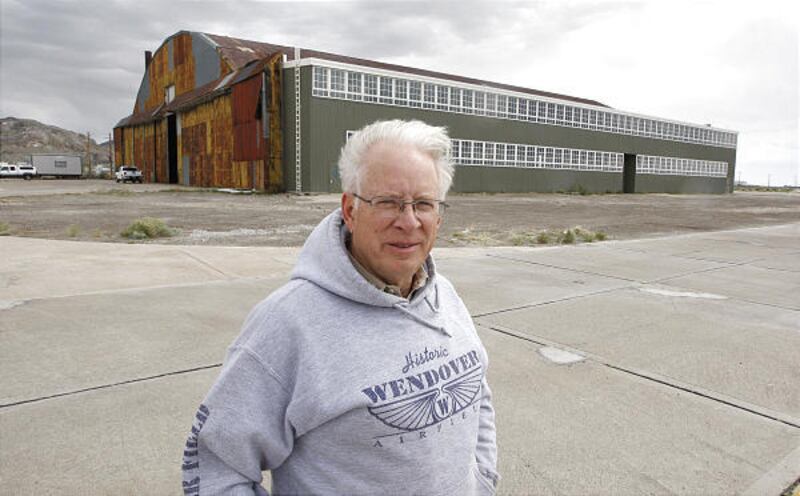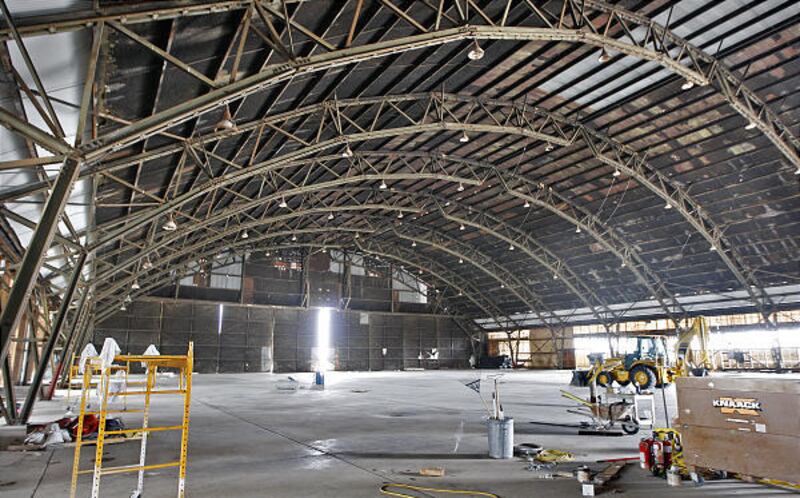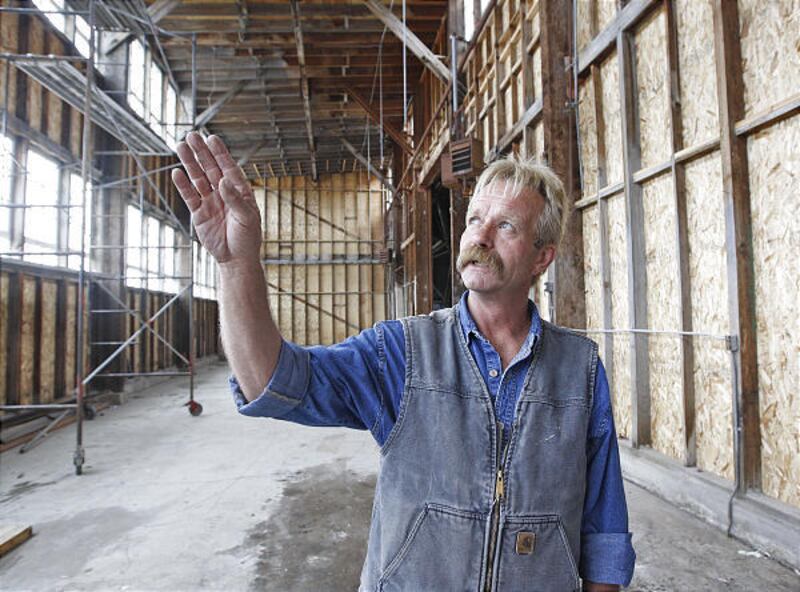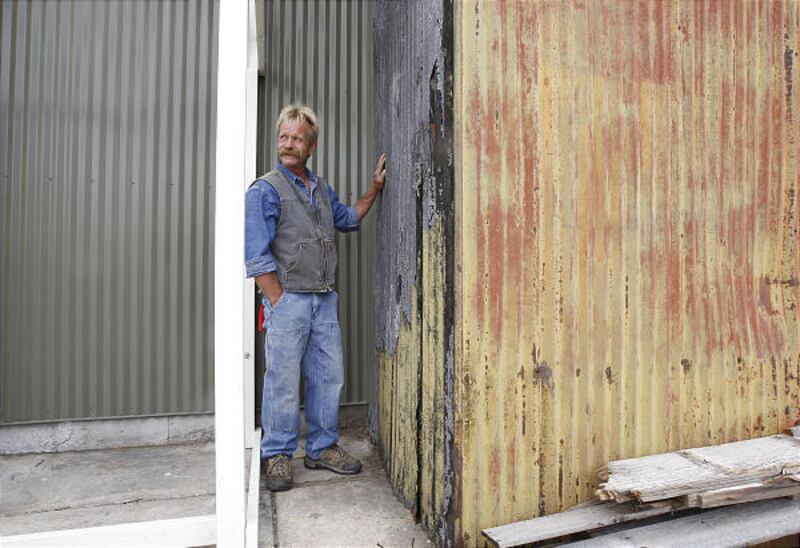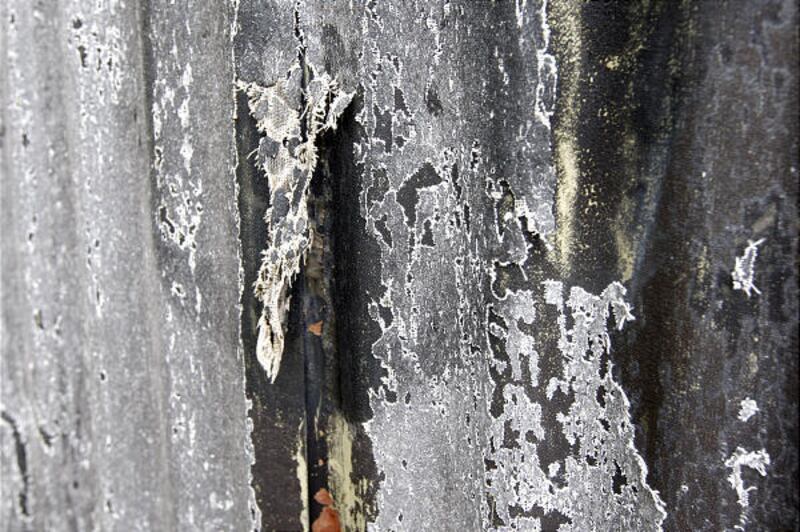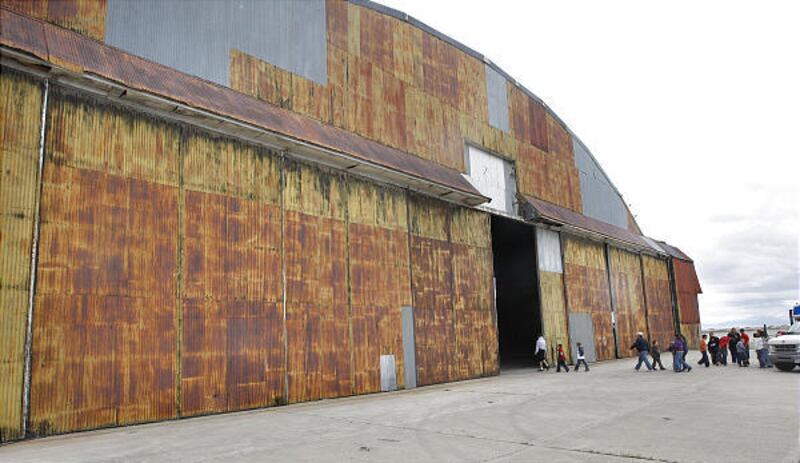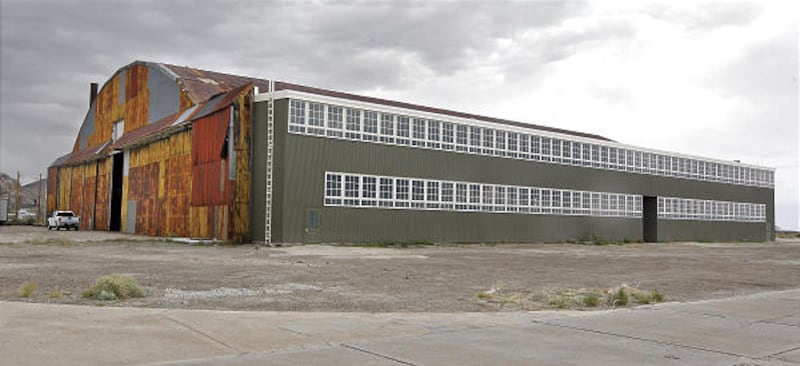WENDOVER, Tooele County — Here's one old soldier no longer fading away.
Months of work stabilizing the centerpiece of historic Wendover Airfield — part of a $511,000 Save America's Treasures grant to preserve the 50,000-square-foot main hangar — is now complete.
Earlier, the hulking structure that once housed B-29 Superfortresses Enola Gay and Bockscar before they delivered their atomic payloads over Hiroshima and Nagasaki, Japan, had been placed on the National Trust for Historic Preservation's list of America's 11 Most Endangered Public Places.
Jim Petersen, the director of Tooele County's Wendover Airport, which encompasses much of the historic footprint of the World War II airbase, said the current stabilization is only a first step in what he sees growing into a $5 million renovation that will fully restore the hangar to its former glory.
The next step, he said, is to raise about $250,000 (an amount to be matched by the federal government) for badly needed cosmetic surgery — replacing the rusting and dilapidated corrugated metal skin covering the building's east and west ends and roof.
As part of the just-completed stabilization effort, the exteriors of the hangar's two lean-to sections received new metal panels and period-style window frames. Additionally, 2,364 windowpanes were either restored or replaced. Some limited restoration of the wooden floors, doors and walls of the hangar's mezzanine areas was also done.
Originally used for offices, Petersen eventually wants to turn these spaces into display areas and a movie theater, expanding the small museum already opened in the airport's restored operation center.
Jim Peterson, construction supervisor for South Salt Lake's Culp Construction, said his six-man crew found the hangar in surprisingly good shape structurally. "There was very little damage," Peterson said. "This building is going to stand the rest of my life and hopefully another 70 years."
Peterson has also worked on historical restoration projects involving the Governor's Mansion and the Cathedral of the Madeline. He enjoyed working on the Wendover hangar because it included a history lesson of the extraordinary, but largely unknown, wartime efforts that took place there.
With this initial phase now completed, airport director Petersen believes it'll become easier raising awareness — and dollars — to continue preserving Wendover Field's vital contributions to winning the war effort.
He eventually would like to see Wendover Field turned into a living museum — a Williamsburg of Army Air Force bases.
Most aircraft museums are located in new buildings, Petersen said. "This would be the original location where Col. Paul Tibbets and the crews for the atomic missions trained. Most people don't realize the significance of the contribution to the Manhattan Project that took place right here."
Petersen has already achieved several renovation successes on a tight budget.
The air base's Norden bombsight building, which is about 80 percent restored inside and out, is an excellent example of preservation using a 50-50 blend of dollars and guile.
Reduced to relic status by the computer age, the Norden bombsight was a technological marvel for its day. Its importance — making precision high-altitude bombing possible — cannot be understated. Keeping such a sophisticated instrument out of enemy hands posed major security issues.
The solution at Wendover was to secure the bombsights in concrete vaults with heavy bank-type doors (all still in place) and require bombardiers to check them in and out for training. The vaults also maintained the bombsights at a steady temperature, improving the mechanism's performance.
Another Petersen reclamation project remains a work in progress. After scrounging together $150,000 to restore the outside of the Officers Club building, he's tackling its large hall-like interior next. When finished, he wants to rent it out for special occasions and has already fielded several inquiries.
"We don't want to overdo it," he said. "I'd like to keep it somewhat Spartan."
e-mail: chuck@desnews.com

